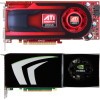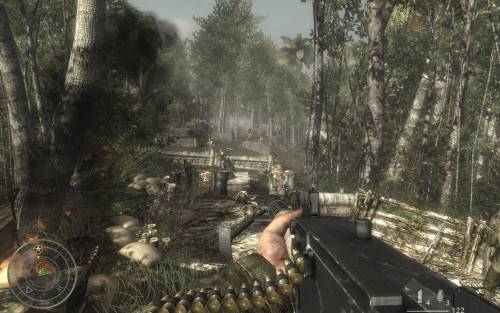- Qualcomm Launches Snapdragon 4 Gen 2 Mobile Platform
- AMD Launches Ryzen PRO 7000 Series Mobile & Desktop Platform
- Intel Launches Sleek Single-Slot Arc Pro A60 Workstation Graphics Card
- NVIDIA Announces Latest Ada Lovelace Additions: GeForce RTX 4060 Ti & RTX 4060
- Maxon Redshift With AMD Radeon GPU Rendering Support Now Available
ATI Radeon HD 4890 & NVIDIA GeForce GTX 275

It’s not often we get to take two brand-new GPUs and pit them against each other in one launch article, but that’s what we’re doing with ATI’s HD 4890 and NVIDIA’s GTX 275. Both cards are priced at $249, and both also happen to offer great performance and insane overclocking-ability. So coupled with those and other factors, who comes out on top?
Page 5 – Call of Duty: World at War
While some popular game franchises are struggling to keep themselves healthy, Call of Duty doesn’t have much to worry about. This is Treyarch’s third go at a game in the series, and a first for one that’s featured on the PC. All worries leading up to this title were all for naught, though, as Treyarch delivered on all promises.
To help keep things fresh, CoD: World at War focuses on battles not exhaustively explored in previous WWII-inspired games. These include battles which take place in the Pacific region, Russia and Berlin, and variety is definitely something this game pulls off well, so it’s unlikely you’ll be off your toes until the end of the game.
For our testing, we use a level called “Relentless”, as it’s easily one of the most intensive levels in the game. It features tanks, a large forest environment and even a few explosions. This level depicts the Battle of Peleliu, where American soldiers advance to capture an airstrip from the Japanese. It’s a level that’s both exciting to play and one that can bring even high-end systems to their knees.



At each one of our resolutions, NVIDIA manages to come out on top, and also beats out what was NVIDIA’s top-end card last summer, the GTX 280. The per-vendor performance differences are far more impressive on the ATI side of things though, where we can see the HD 4890 sky-rocket up past the HD 4870 1GB.
|
Graphics Card
|
Best Playable
|
Avg. FPS
|
|
NVIDIA GTX 295 1792MB x 2
|
2560×1600 – Max Detail, 8xAA
|
90.283 FPS
|
|
NVIDIA GTX 285 1GB x 2
|
2560×1600 – Max Detail, 8xAA
|
63.401 FPS
|
|
Zotac GTX 295 1792MB
|
2560×1600 – Max Detail, 8xAA
|
52.461 FPS
|
|
Palit HD 4870 X2 2GB
|
2560×1600 – Max Detail, 8xAA
|
37.825 FPS
|
|
NVIDIA GTX 285 1GB
|
2560×1600 – Max Detail, 4xAA
|
41.510 FPS
|
|
NVIDIA GTX 275 896MB
|
2560×1600 – Max Detail, 4xAA
|
39.998 FPS
|
|
Palit GTX 280 1GB
|
2560×1600 – Max Detail, 4xAA
|
38.192 FPS
|
|
Sapphire HD 4890 1GB
|
2560×1600 – Max Detail, 4xAA
|
34.094 FPS
|
|
XFX GTX 260/216 896MB
|
2560×1600 – Max Detail, 4xAA
|
32.723 FPS
|
|
ASUS GeForce 9800 GTX+ 512MB
|
2560×1600 – Max Detail, 0xAA
|
34.596 FPS
|
|
NVIDIA GeForce GTS 250 1GB
|
2560×1600 – Max Detail, 0xAA
|
34.192 FPS
|
|
Diamond HD 4870 1GB
|
2560×1600 – Max Detail, 0xAA
|
30.372 FPS
|
|
Sapphire HD 4830 512MB
|
1920×1200 – Max Detail, 0xAA
|
40.157 FPS
|
|
Sapphire HD 4670 512MB
|
1920×1200 – Max Detail, 0xAA
|
28.101 FPS
|
Since both of the cards here performed well at 2560×1600, our best-playable settings mimic what’s seen in the final graph above. NVIDIA’s card was noticeably better, but nothing was lacking where the HD 4890 was concerned.
Support our efforts! With ad revenue at an all-time low for written websites, we're relying more than ever on reader support to help us continue putting so much effort into this type of content. You can support us by becoming a Patron, or by using our Amazon shopping affiliate links listed through our articles. Thanks for your support!






